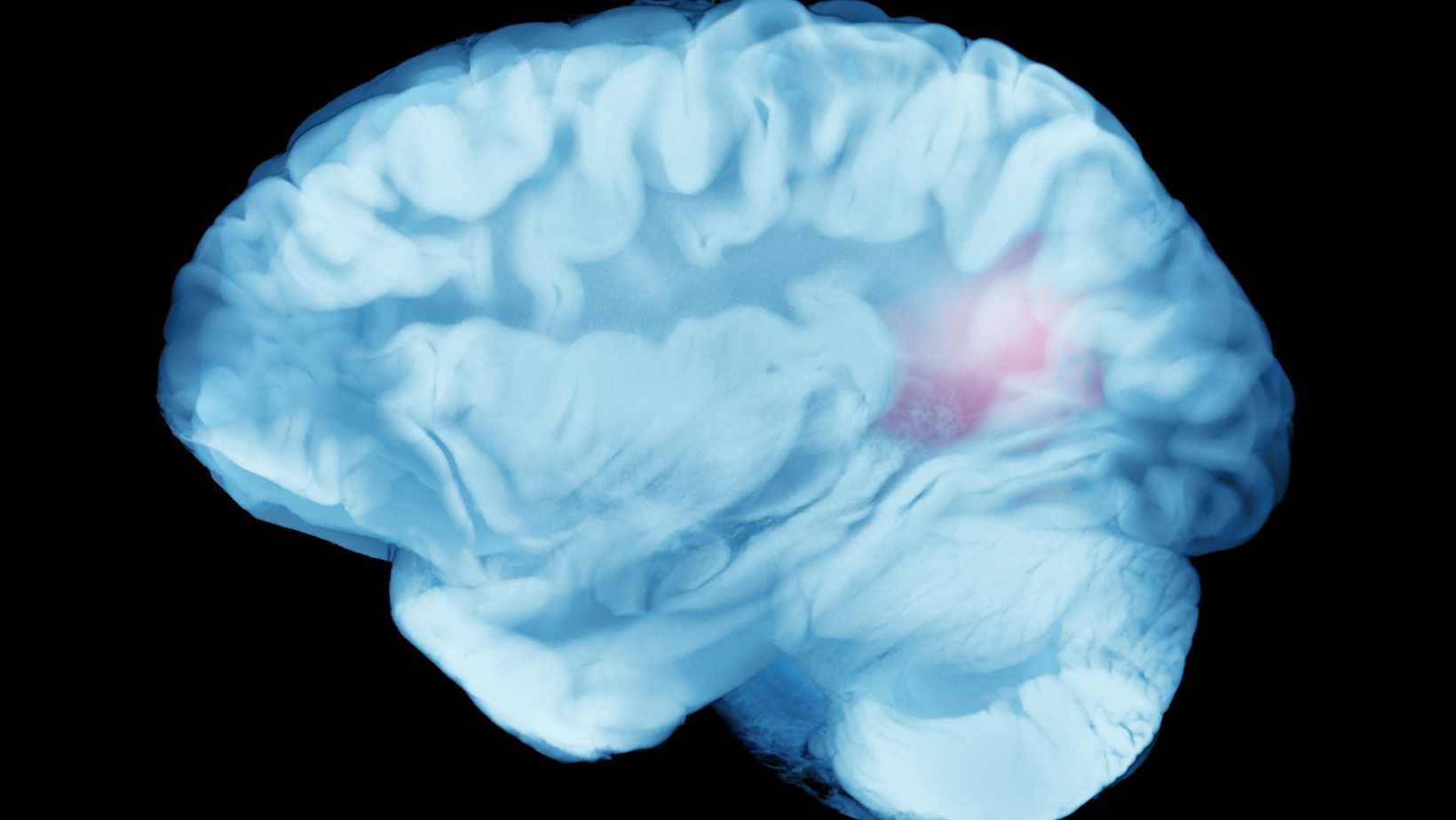Have you ever gone to bed feeling tired, but found yourself tossing and turning all night because of back pain? If you live with ankylosing spondylitis, you probably know this struggle too well. Nighttime can turn into a painful and restless experience, even after a long day. Waking up sore, stiff, and unrested becomes your “normal”. But it doesn’t have to be.
There are real, simple, science-backed ways to sleep better during ankylosing spondylitis, and that’s exactly what this blog will guide you through. As a US-trained neurologist, I’ve worked with many patients who’ve found relief through small changes. In this blog, we’ll understand why your sleep suffers and what you can start doing tonight to fix it.
Table of Contents
ToggleWhat is Ankylosing Spondylitis (AS)?
Ankylosing Spondylitis (AS) is a rare type of arthritis that primarily affects the spine. Severe inflammation of the vertebrae might eventually lead to persistent pain and disability. In more exceptional cases, the inflammation can cause new bone to form on the spine, thus causing a deformity. Ankylosing spondylitis can also affect other parts of your body, causing pain and stiffness in them. It could also affect your most functional joints, such as the shoulders, hips, and knees. One should be confident enough to face the world and can easily manage the workplace if one has AS with the help of a doctor and support from office people. Don’t ever feel demotivated.
Backache in itself is bad enough, but conditions such as Ankylosing Spondylitis make it even worse. One of the most common symptoms is a disturbed sleep cycle due to debilitating back pain. When your body doesn’t get proper rest and sleep quality is compromised, your health can further deteriorate. Lack of sleep can leave you exhausted, adding to fatigue as well as brain fog. Such a disturbed sleeping pattern can worsen anxiety levels and add to increased depression and stress. However, you don’t have to give up on quality sleep.
Below are some tips that will guide you in how to sleep with ankylosing spondylitis:
1. Sleep on a comfortable bed and mattress.
The surface you sleep on matters more than you think.
- Medium-firm mattresses help with posture and pressure relief.
- Memory foam molds to your body while still keeping the spine straight.
- Adjustable beds let you raise your legs or upper body to reduce tension.
According to the Journal of Chiropractic Medicine, a medium-firm mattress improved sleep in 62% of chronic back pain patients.
| Mattress Type | Sleep Quality Rating | Pain Reduction (%) |
|---|---|---|
| Soft (Foam) | Low | 30% |
| Medium-Firm (Foam) | High | 62% |
| Adjustable (Electric) | Very High | 71% |
Your mattress should be such that it is cozy and comfortable. Suffering from ankylosing spondylitis could affect other joints such as the neck, shoulders, and hips. Hence, a hard mattress or bed will affect your sleep.
A mattress that evenly distributes your weight when you lie on it is beneficial. It would be best to make sure that it shouldn’t be too soft or too firm. A mattress that is too soft won’t provide the required support, whereas if it is too firm, it won’t hold the natural curves of your body, making it difficult to sleep on. You can always ask your doctor for the best bed for ankylosing spondylitis.
Unsure if the reason for your sleep loss is ankylosing spondylitis or not? Read all about the ankylosing spondylitis disease in detail and find out.
2. Take notice of your pillow.
Generally, it has been observed that people who use larger pillows are hunched when they lie flat on the pillow. This causes stiffness of the neck and worsens ankylosing spondylitis. Using a thin spondylitis pillow will help you maintain a comfortable position and maintain a good sleeping posture while sleeping.
- Cervical pillows keep the neck and spine straight.
- Wedge pillows reduce lower back strain.
- Knee pillows help align the hips.
One must consult the doctor for the best pillow for ankylosing spondylitis.
3. Heat and cold therapy
Warm water is soothing for sore joints. A warm bath before bed will help loosen your joints and relieve any sensation of pain, helping you sleep soundly. At the same time, you can use an ice pack to loosen the stiffness of your back.
4. Straighten up and stop propping up your legs.
Sleeping with your spine straight could help you lessen the ache. You can lie flat on the back or stomach and avoid curling your legs up into your body. When you suffer from lower back pain, placing a pillow underneath your legs while you sleep could be tempting for temporary relief from pain. However, this may alter your body’s position while you wake up, thus causing more damage.
5. Exercise:
An essential part of ankylosing spondylitis treatment includes daily exercise. A common complaint among patients of ankylosing spondylitis in the neck is the stiffening of the back muscles. Taking a brisk walk in the evening could help wake up your muscles and ease the backache.
Movement keeps stiffness away.
- Gentle physical therapy exercises loosen tight joints.
- Try 5 minutes of cat-cow stretches or pelvic tilts.
- Child’s pose can release lower back tension.
These are AS-safe stretches you can do without risking further damage.
It will also help you fall asleep faster, beating the problem of insomnia. Exercising regularly or an early morning fitness program can enhance your sleep, letting you repose peacefully. One must also take precautions while doing exercises so AS doesn’t get worse.
6. Deep breathing:
Deep breathing is an excellent exercise that can help you increase and maintain your lung capacity and keep your rib cage flexible. Here are some deep breathing tips you could try:
- Sit or lie down and observe your breathing.
- Take a slow, deep breath. You must feel the air that enters through your nose and moves toward your lower abdomen.
- Allow your abdomen to expand fully through deep breathing.
- Breathe out slowly through your mouth or nose.
- Place one hand on your abdomen, feeling it rise as you inhale and fall as you exhale.
- Alternate regular and deep breaths a few times.
Visit Your Doctor
If ankylosing spondylitis starts affecting your sleep schedule, it is time to see your physician for treatments. The best treatment will help you manage the pain and slow your disease. Prescribed medications after proper consultation and tests can help you get better sleep and reduce pain. Medications such as Nonsteroidal anti-inflammatory drugs (NSAIDs) and TNF inhibitors will reduce the inflammation, preventing any further damage to your joints. TNF inhibitors might also help improve the quality of your sleep.
While there is no proper cure for Ankylosing Spondylitis, several treatments are available to help relieve the symptoms. They can also help delay or prevent the process of the spine fusing and stiffening. In most cases, treatment involves a combination of motion exercises. Despite this condition’s chronic nature, it is perfectly functional to live with it by making healthier lifestyle choices. One should be taking proper care of their body, along with medications and exercise. Following a nutritious diet, doing spondylitis exercises and not letting toxic substances into your body, such as nicotine and alcohol, can prove very useful for living with ankylosing spondylitis.
You can try consulting a reputed neurologist through an online appointment for proper guidance and treatment for further health complications and issues related to ankylosing spondylitis.
Reclaim Restful Sleep: Get Expert Help From Dr. Chandril Chugh
If you’re tired of restless nights and want real change, don’t go at it alone. Sleep is a crucial part of healing, especially with ankylosing spondylitis. The right support can help you finally rest better.
As a US-trained, board-certified neurologist, Dr. Chandril Chugh helps people like you find long-term solutions for chronic pain and sleep problems. Whether it’s customizing your sleep environment, choosing the best treatment, or adjusting medications, there’s a clear path to better rest.
Book your consultation today and start finding real, lasting ways to sleep better during ankylosing spondylitis. Relief is possible, and it starts with one small step.
Also Read:

Dr Chandril Chugh
Dr. Chandril Chugh, a renowned American Board-Certified Neurologist, is just a click away. With years of global experience, he offers trusted neurological guidance online.
→ Book a consultation to discover which remedies suit your needs best.




